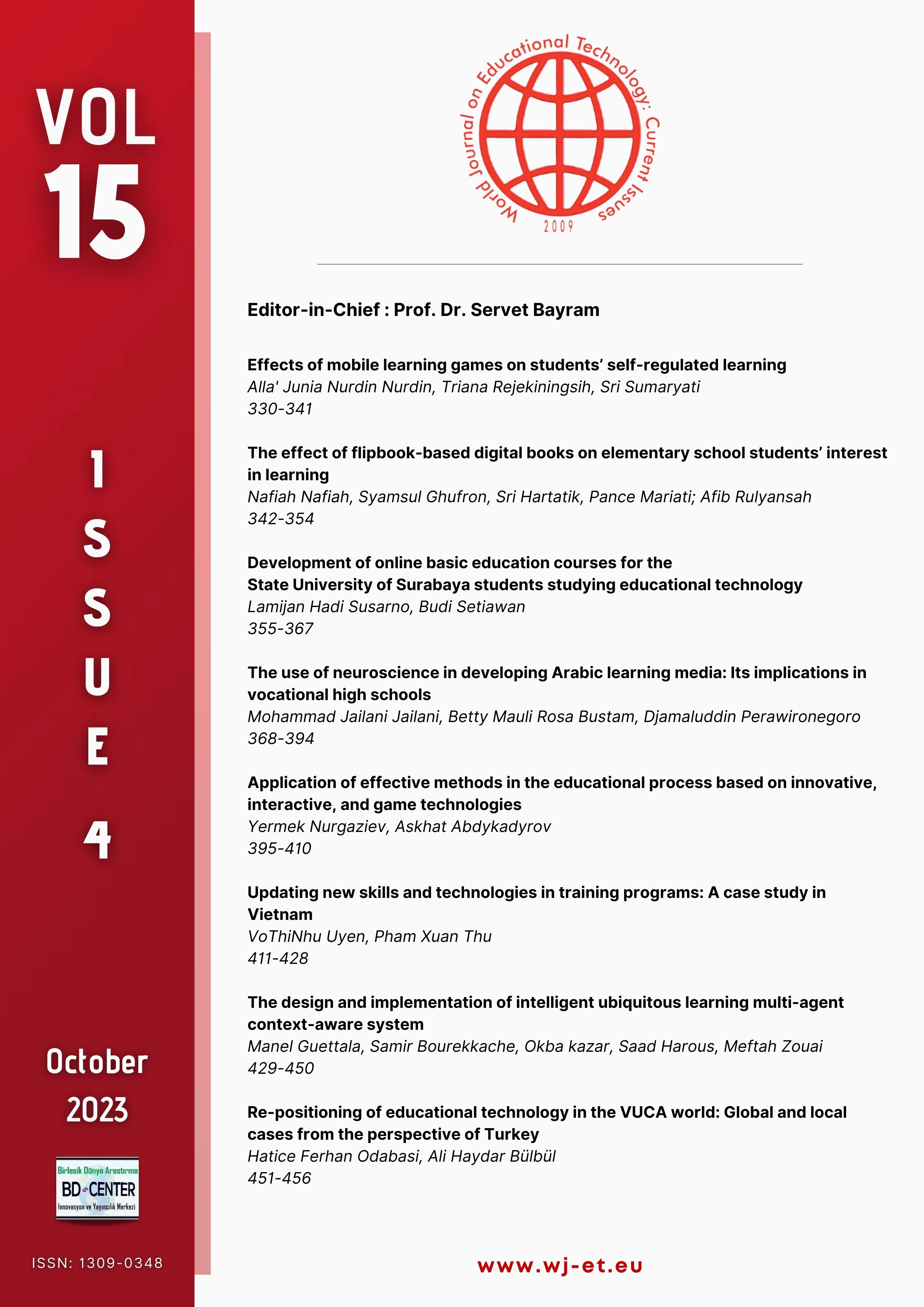The use of neuroscience in developing Arabic learning media: Its implications in vocational high schools
Main Article Content
Abstract
The purpose of this study was to develop neuroscience-based learning media at SMK Muhammadiyah 3 Yogyakarta. The research approach used in this research is research and development (R&D). The research subjects were teachers and students. Data collection was carried out by using interviews, observation, and documentation methods. The validity of this research data using triangulation. Data analysis used the Miles and Huberman model, namely data reduction, data display, and conclusion drawing/verification data. The results of this study prove that learning media is very effectively used to improve student learning outcomes. Based on the results, it can be concluded that the material brain-based learning media is considered very feasible to be applied in Arabic teaching and learning activities. In addition, this learning media is considered effective to be implemented in the process of learning Arabic mufrodat and muhadasah.
Keywords: Arabic; mufrodat; muhadasah; neuroscience; teaching media.
Downloads
Article Details

This work is licensed under a Creative Commons Attribution 4.0 International License.
World Journal on Educational Technology: Current Issues is an Open Access Journal. The copyright holder is the author/s. Licensee Birlesik Dunya Yenilik Arastirma ve Yayincilik Merkezi, North Nicosia, Cyprus. All articles can be downloaded free of charge. Articles published in the Journal are Open-Access articles distributed under CC-BY license [Attribution 4.0 International (CC BY 4.0)].
Birlesik Dunya Yenilik Arastirma ve Yayincilik Merkezi (BD-Center)is a gold open-access publisher. At the point of publication, all articles from our portfolio of journals are immediately and permanently accessible online free of charge. BD-Center articles are published under the CC-BY license [Attribution 4.0 International (CC BY 4.0)], which permits unrestricted use, distribution, and reproduction in any medium, provided the original authors and the source are credited.
